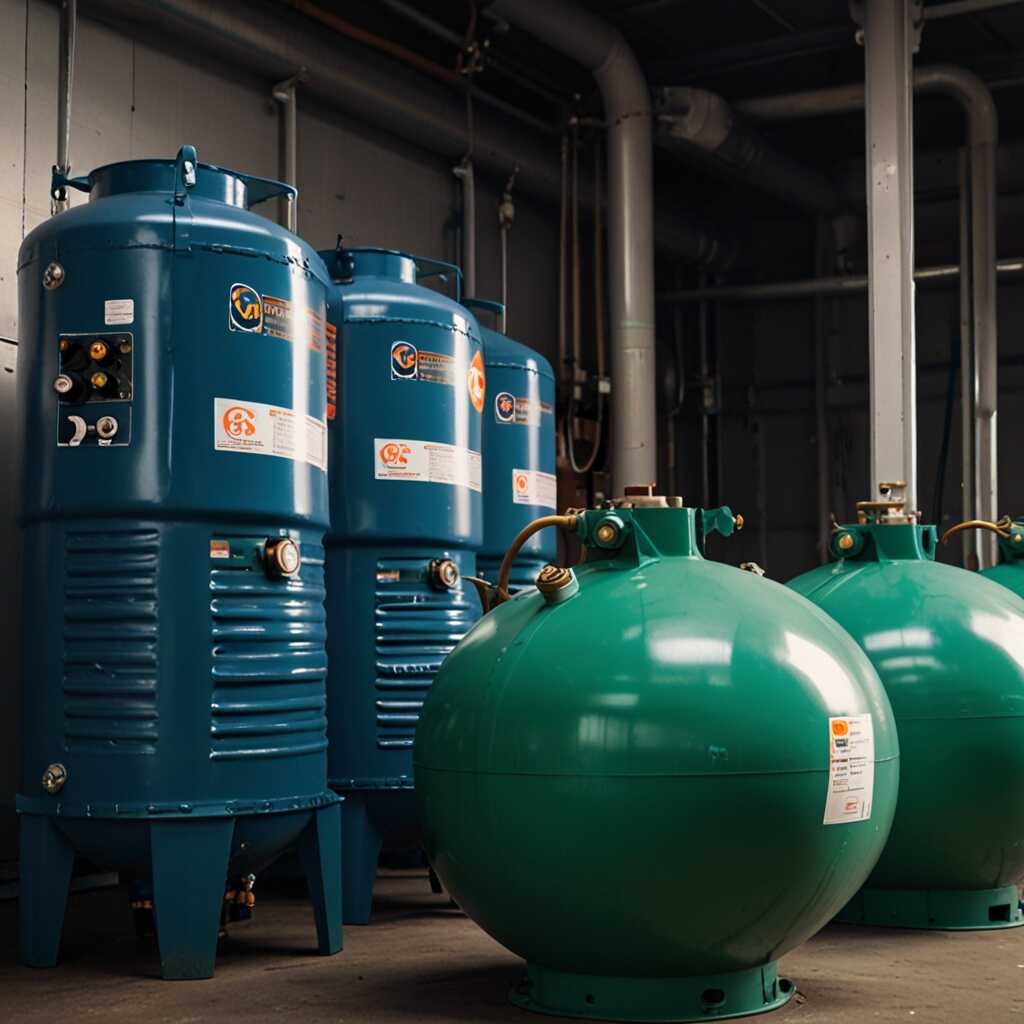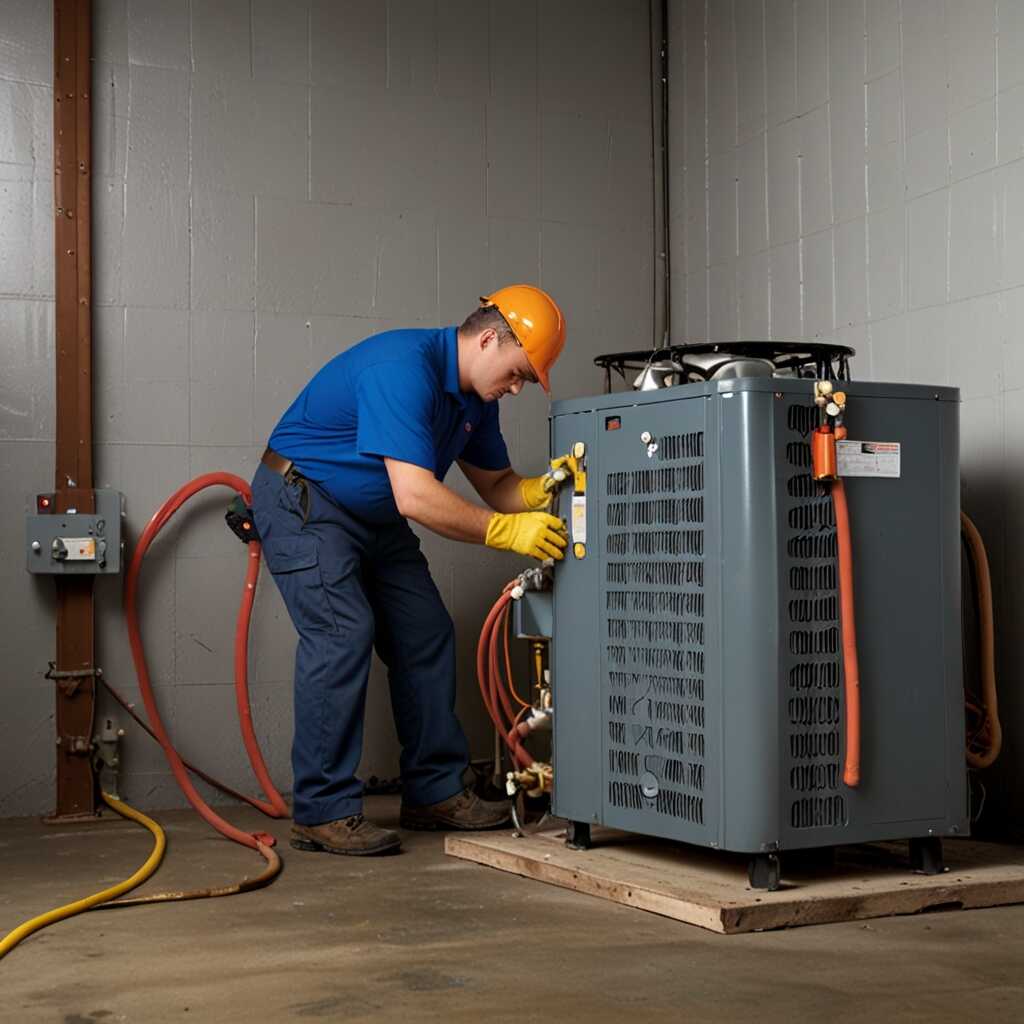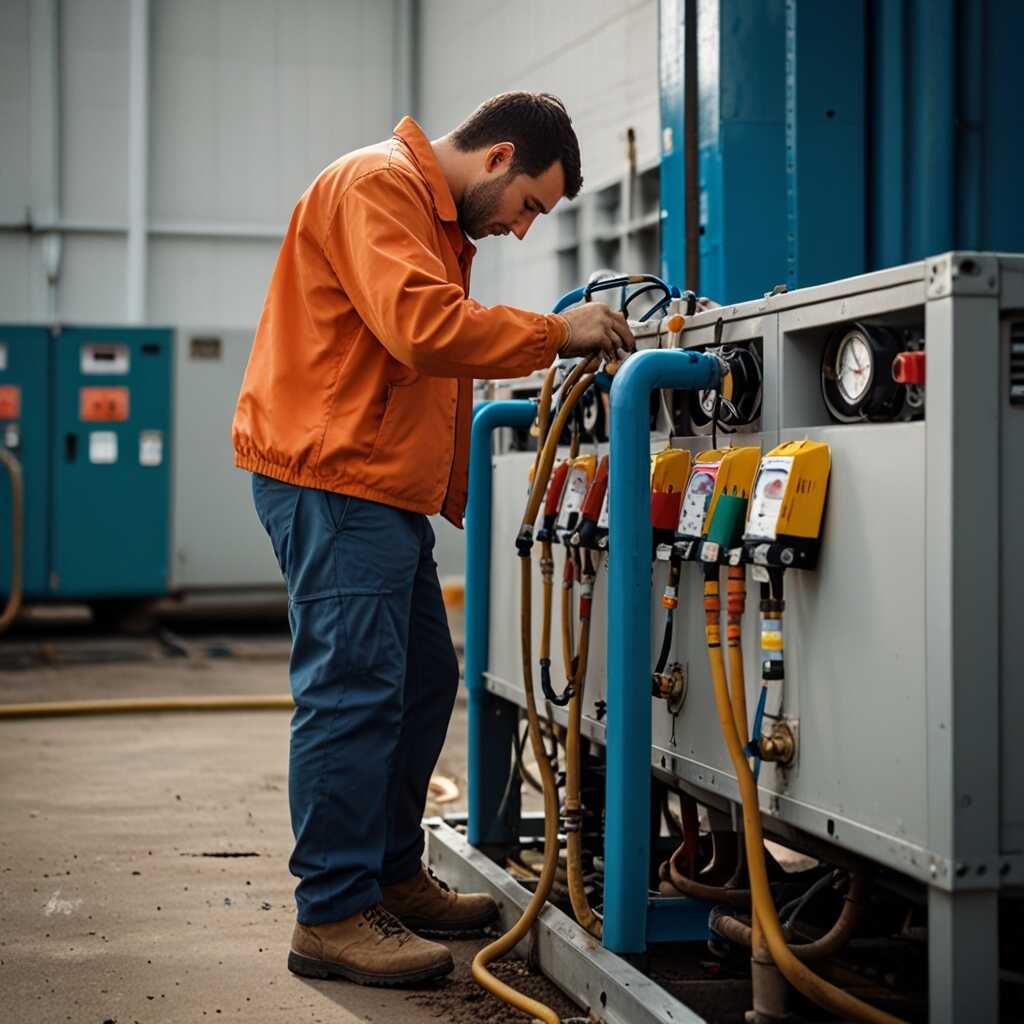Automatic defrost cycles in refrigerant recovery machines play a crucial role in preventing ice buildup. This feature enhances the performance and efficiency of HVAC systems by ensuring that equipment operates smoothly without interruptions. Understanding how these cycles work helps HVAC technicians and refrigeration engineers maintain optimal functionality of their machines. At Refrigerant Recovery Pro, we provide valuable insights and best practices on utilizing automatic defrost cycles to minimize ice-related issues in refrigerant recovery operations.
Basics of Refrigerant Recovery Machines in HVAC Systems
Refrigerant recovery machines are essential tools in HVAC systems, designed to extract refrigerant from units safely. They ensure proper refrigerant management during maintenance and repair, preventing harmful leaks into the environment. The main components typically include a compressor, condenser, receiver, and filters. These elements enhance the efficiency and reliability of the refrigerant recovery process. Most machines can handle various refrigerants, significantly improving performance in diverse HVAC applications. Proper operation and maintenance of these machines are crucial for optimal performance and longevity, as knowledgeable HVAC professionals can ensure smooth operation and best results.
Key Components and Their Functions in Refrigerant Recovery Machines
The essential components of refrigerant recovery machines play a vital role in their functionality. The compressor compresses the refrigerant gas, while the condenser cools it, transforming gas into liquid. The receiver temporarily stores the liquid refrigerant before it undergoes further processing. Filters trap contaminants, ensuring high-quality recovery. Many modern machines feature advanced controls that allow for monitoring efficiency ratings, enhancing usability and performance. Some systems even come equipped with safety features that prevent overpressurization, ensuring lasting reliability. Understanding these components helps HVAC professionals make informed choices during maintenance, ensuring efficient and responsible refrigerant management.
Consequences of Ice Buildup on System Performance
Ice buildup in HVAC systems leads to significant performance issues. It blocks airflow, reducing system efficiency. Compressors can overheat due to excessive load, leading to failure. Ice accumulation also reduces the heat exchange effectiveness in evaporators, resulting in less cooling. Additionally, air handlers may struggle to push air through areas blocked by ice, causing uneven temperatures in spaces. Identifying these issues emphasizes the role of automatic defrost cycles in preventing such performance degradation.
Component-Specific Effects of Ice Buildup
Ice buildup affects specific HVAC components like compressors, evaporators, and air handlers. Compressors face increased resistance, leading to overheating and potential failure. Evaporators suffer from decreased heat exchange, reducing cooling efficiency. Air handlers experience airflow restrictions, causing uneven temperature distribution. The automatic defrost cycle function in refrigerant recovery machines is essential for maintaining these components’ reliability and efficiency. Regular testing of these defrost cycles ensures optimal performance in HVAC systems, ultimately enhancing the equipment’s longevity.

How Automatic Defrost Cycles Function
The automatic defrost cycle in refrigerant recovery machines includes components like temperature sensors, control units, and heating elements. These components work together to monitor the machine’s operating environment and activate when frost or ice formation is detected. By analyzing data from temperature sensors, the cycle triggers defrosting, improving cooling efficiency and preventing ice buildup. This feature enhances the reliability of the machine, allowing it to perform optimally even under challenging conditions.
Benefits of Automatic Defrost Cycles
Automatic defrost cycles deliver significant benefits for refrigerant recovery machines. They help maintain consistent cooling efficiency by eliminating ice that can obstruct airflow. By reducing the frequency of manual defrosting, technicians save time and resources. The ability to handle varying ambient conditions makes these cycles essential for HVAC systems facing fluctuating temperatures. This technology is proven to enhance the machine’s overall performance, providing a reliable solution for ice formation challenges.
Key Figures Surrounding Frost Prevention Technology
- Automatic defrost cycles in recovery machines operate approximately every 30 minutes.
- Studies show ice buildup can increase recovery times by up to 40%.
- Effective defrost cycles reduce equipment downtime by 25% on average.
- Ice accumulation may lower the efficiency of machines by as much as 20%.
- About 70% of HVAC failures relate to inadequate defrosting systems.
- A well-maintained defrost cycle can extend the lifespan of recovery machines by 10 years.
- Studies confirm that cycles can eliminate ice buildup in less than 5 minutes.

Operational Efficiency of Automatic Defrost Cycles
Automatic defrost cycles in refrigerant recovery machines include heating elements, temperature sensors, and control systems. These components work together to maintain proper operational efficiency. The heating elements activate when the sensors detect ice buildup, preventing ice from obstructing the recovery process. This method enhances overall reliability and efficiency by ensuring uninterrupted refrigerant flow. The effectiveness of these cycles varies depending on the design and functionality of the HVAC system, as environments and load demands differ. Typical automatic defrost cycles last between 15 to 30 minutes, depending on ice accumulation and machine specifications, which impacts how quickly operations can resume.
Impact of Automatic Defrost Cycles on Various HVAC Systems
Automatic defrost cycles can significantly enhance the efficiency of refrigerant recovery in HVAC systems. They are designed to adapt to different operational conditions, such as temperature fluctuations and humidity levels. For example, systems operating in colder climates may experience increased ice accumulation, making reliable defrost cycles essential. Experienced HVAC technicians should assess the specific needs of their systems to optimize these cycles. Their reliable performance ensures efficient refrigerant management, reducing downtime and improving system operation. Frequent testing and reviews can help identify the best practices in integrating automatic defrost cycles, ensuring systems remain productive and compliant with environmental regulations.

Advantages of Incorporating Automatic Defrost Technology
Refrigerant recovery machines with automatic defrost cycles provide numerous benefits. They enhance performance by preventing ice buildup that can hinder functionality. Improved efficiency is evident as these machines maintain optimal operation temperatures, reducing energy consumption. By minimizing ice accumulation, technicians experience reduced downtime, allowing for quicker service and a more streamlined workflow. This reliability ensures that HVAC systems operate effectively, remaining within regulatory compliance while delivering consistent results.
Specific Performance Improvements from Automatic Defrost Cycles
Automatic defrost cycles deliver specific performance improvements by regularly removing ice build-up that typically occurs in refrigerant recovery machines. This capability allows HVAC systems to maintain steady operation temperatures, which enhances energy efficiency. Research indicates that machines with defrost technology can achieve efficiencies up to 30% better than those without. Furthermore, they help HVAC professionals avoid lengthy troubleshooting sessions, as the machines reliably perform in various environmental conditions. This ensures that equipment remains durable and can handle demanding recovery tasks without interruption.
Advantages of Integrated Defrost Mechanisms
- Automatic defrost cycles enhance the performance of refrigerant recovery machines.
- They increase operational safety by minimizing ice-related hazards.
- Such cycles improve energy efficiency and reduce operating costs.
- Regular operation limits the wear and tear on machine components.
- Defrost cycles help maintain consistent recovery rates during operation.
- Machine reliability increases, leading to fewer service calls and repairs.
- These mechanisms support regulatory compliance regarding refrigerant management.

Addressing Challenges Despite Automatic Defrost Systems
HVAC professionals may face persistent ice buildup in refrigerant recovery machines, even with automatic defrost cycles. Common causes include inadequate airflow, dirty coils, and low refrigerant levels. These factors impact defrost cycle efficiency, requiring troubleshooting strategies. Environmental conditions, such as high humidity and low temperatures, can further hinder performance. Regular maintenance and monitoring help address these issues. The typical duration of an automatic defrost cycle is around 10 to 15 minutes, depending on the machine design. Understanding these variables enhances reliability and overall system performance.
Optimizing Performance During Automatic Defrost Cycles
To optimize performance during automatic defrost cycles, HVAC technicians should conduct regular inspections and cleaning of filters and coils. Ensuring proper airflow is crucial. Technicians must also verify refrigerant levels to avoid ice buildup. Installing an external temperature gauge may help monitor conditions. If necessary, consider upgrading to a defrost cycle with adjustable settings. This enhances the machine’s efficiency and reduces freeze issues. Using reliable testing methods ensures the recovery machine operates optimally during varying environmental conditions.
Essential Maintenance for Reliable Performance
Key maintenance tasks for refrigerant recovery machines include regular checks on seals, filters, and overall cleanliness. HVAC professionals should refer to specific manuals to understand performance needs across different models. They should focus on replacing worn parts promptly, as this ensures optimal performance practices and enhances machine reliability. It’s essential to keep the equipment free from debris and ensure all connections are tight. The recommended frequency for servicing refrigerant recovery machines typically ranges from every six months to a year. Conducting routine checks helps prevent unexpected failures.
Best Practices for Ensuring Equipment Longevity
To ensure equipment longevity, HVAC professionals should implement detailed maintenance logs for each refrigerant recovery machine. This includes recording previous service dates, parts replaced, and any performance issues experienced. Regular testing of machine efficiency should also be scheduled, allowing professionals to identify potential problems before they escalate. Using equipment designed with durability in mind will enhance efficiency and reliability. By establishing a relationship with manufacturers for technical support and expert guidance, technicians can gain essential insights into enhancing machine reliability and making informed decisions.
Relevant Brands and Their Applications in Refrigeration
- Brand A offers user-friendly machines ideal for small HVAC businesses focusing on residential projects.
- Brand B specializes in high-capacity units that suit large commercial applications well.
- Brand C focuses on portable models, perfect for job sites needing light equipment.
- Brand D integrates advanced defrost functions, making them suitable for sensitive environments.
- Users often select Brand E for its robust support and warranty options, ensuring customer confidence.
- Different industries, like food storage and pharmaceuticals, benefit greatly from reliable defrosting systems.
- Field technicians universally require effective tools for maintaining operational efficiency during service calls.
Innovations in Refrigerant Recovery and Defrosting Techniques
Recent innovations in automatic defrost cycles for refrigerant recovery machines include smarter sensors that monitor ice buildup. These sensors provide real-time data, enhancing the efficiency of defrost cycles. Advances in software algorithms improve the timing and response of defrost cycles, ensuring optimal performance. Innovations like heat exchangers designed for faster thawing significantly reduce downtime. HVAC professionals can benefit from these developments as they enhance reliability and overall recovery efficiency. The integration of advanced materials and improved designs is expected to lead to notable advances by 2025.
Technological Advancements in Defrost Cycles
Technological advancements in defrost cycles greatly impact HVAC efficiency. Modern refrigerant recovery machines are designed with automatic defrost features that use intelligent monitoring systems. These systems detect ice buildup and trigger defrost cycles as needed, optimizing the recovery process. As a result, systems can handle temperatures more effectively, minimizing energy consumption. Furthermore, improvements in components, like high-efficiency compressors and fans, enhance overall system reliability. Performance reliability and defrost efficiency are crucial for HVAC professionals aiming to ensure seamless operation while adhering to environmental guidelines.